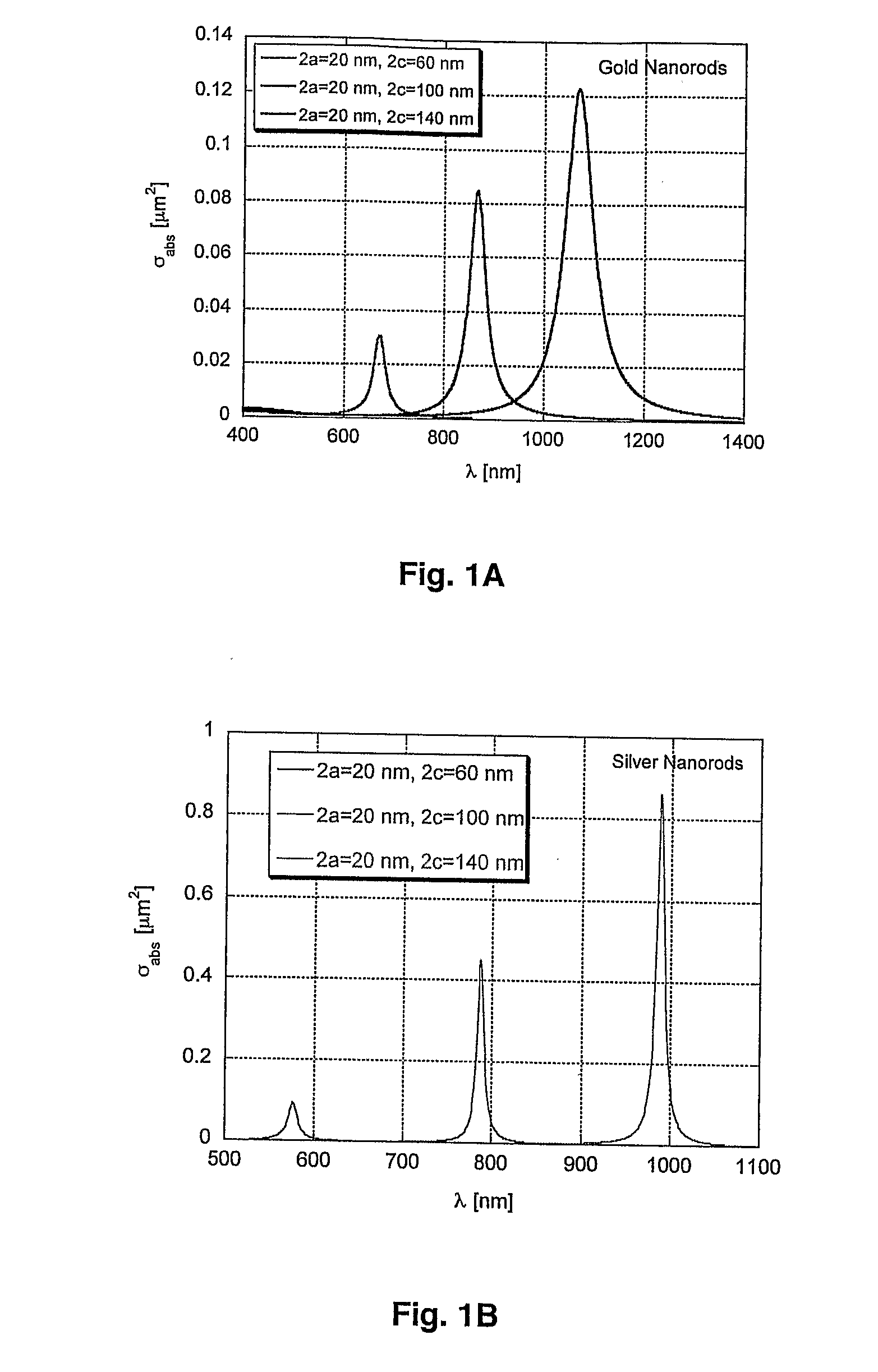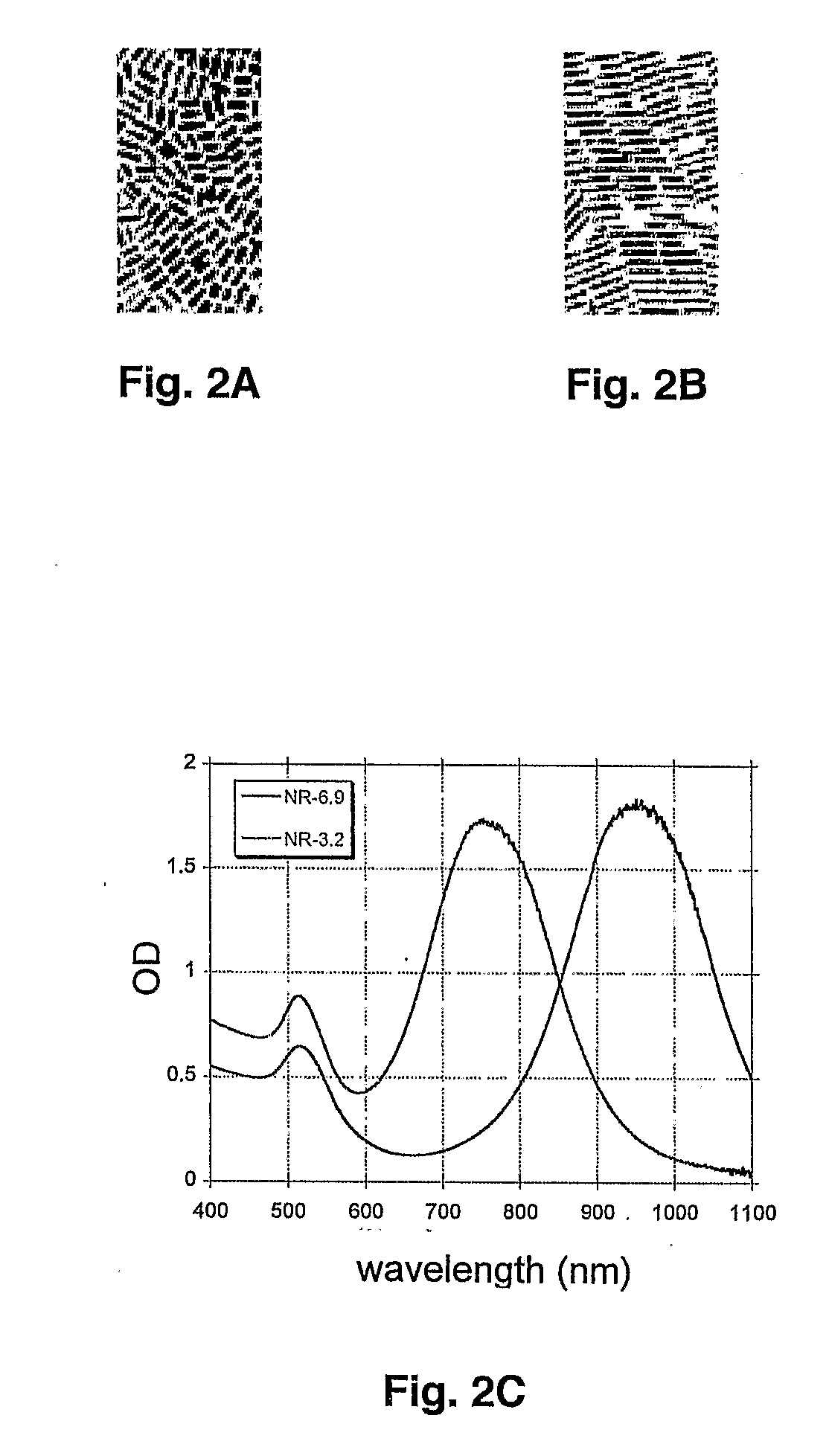Laser-Activated Nanothermolysis of Cells
- Summary
- Abstract
- Description
- Claims
- Application Information
AI Technical Summary
Benefits of technology
Problems solved by technology
Method used
Image
Examples
example 1
Laser Activated Nanothermolysis of Cultured Target Cells
[0163]Preparation of Cells
[0164]Several in vitro models were studied with myeloid cells of K562 cell line. These models used different protocols to couple nanoparticles to the cells. The test sample was prepared using selective targeting of leukemia cells with nanoparticle. Model leukemia cells at concentration of 800,000 / ml in phosphate buffered solution (PBS) with 1% fetal bovine serum (FBS) were preincubated with two primary monoclonal antibodies CD15 and Glycophorin A (20 μl / ml of each) for 30 min with shaking in the dark at 4° C. After incubation the cells were centrifuged at 300G for 4 minutes and washed twice. Then the cells were incubated again for 1 hour with 2*1010 / ml of 30 nm gold nanoparticles conjugated to secondary monoclonal antibodies, goat anti-mouse IgG (TedPella Inc, Redding, Calif.). Then cells were separated from the nanoparticles by centrifugation at 300 g for 4 min. The bottom pellet of cells was resuspen...
example 2
Elimination of Human Leukemia Cells from Bone Marrow Transplant by LANTCET
[0182]The method for selective elimination of specific tumor cells includes the two main steps of cell targeting with nanoparticle and laser irradiation of cell mixture. The clusters of light-absorbing nanoparticles are sources of laser-activated microbubbles that are the main cell killing (eliminating) process. Selectivity of the formation of clusters of nanoparticles can be achieved by using a two-staged incubation procedure. At the first stage nanoparticles are selectively coupled to the membranes of specific cells. Monoclonal antibodies (MAB) that are specific primarily to membrane receptors, which are expressed mainly by target cells, are used. Those MABs are referred as primary MABs (MAB1) and they are first coupled to the receptors at cell membrane. Nanoparticles also are pre-conjugated with secondary MAB (MAB2), which have high coupling efficiency for MAB1. Then nanoparticle-MAB2 complexes are added an...
PUM
| Property | Measurement | Unit |
|---|---|---|
| Length | aaaaa | aaaaa |
| Time | aaaaa | aaaaa |
| Time | aaaaa | aaaaa |
Abstract
Description
Claims
Application Information
 Login to View More
Login to View More - R&D
- Intellectual Property
- Life Sciences
- Materials
- Tech Scout
- Unparalleled Data Quality
- Higher Quality Content
- 60% Fewer Hallucinations
Browse by: Latest US Patents, China's latest patents, Technical Efficacy Thesaurus, Application Domain, Technology Topic, Popular Technical Reports.
© 2025 PatSnap. All rights reserved.Legal|Privacy policy|Modern Slavery Act Transparency Statement|Sitemap|About US| Contact US: help@patsnap.com



